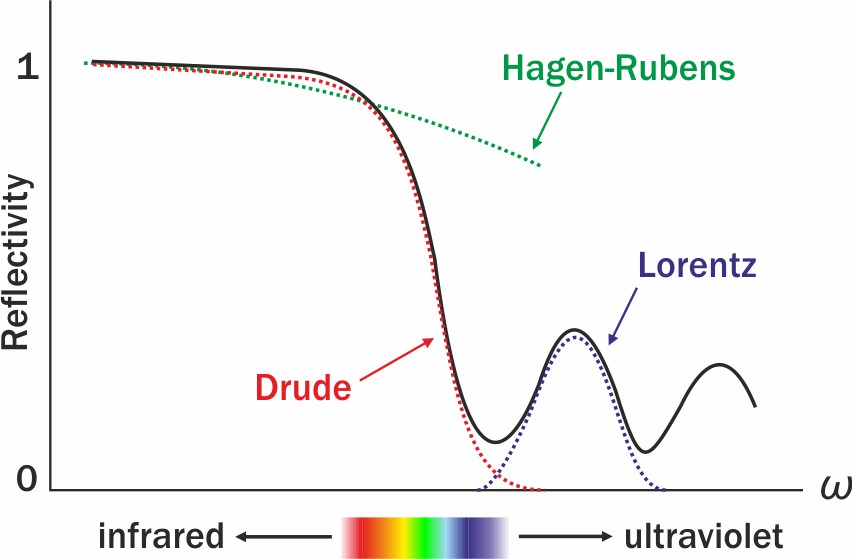Welcome to the Experimental Physics 5 – Solid-State Physics lecture, WS2023/24!
Exam
Exam schedule has been sent to all participants via e-mail. Please, let me know if you have not received it
Lecture 26 (31.01.2024). Scattering and its implications
How resistivity changes with temperature and why metals conduct heat
residual resistivity ratio
dielectric materials
Rudolf Peierls
Lecture 25 (25.01.2024). Landau levels and quantum oscillations
Cyclotrons, new effective mass, and extremal orbits
Fermi surface determination
2D electron gas
Shubnikov and de Haas
Lecture 24 (24.01.2024). Fermiology
Where the electrons move, and how solid-state physics meets art
magnetoresistance
copper and its alloys
David Shoenberg
Lecture 23 (18.01.2024). Description of band structures
Electronic bands from tight binding
exfoliation
graphene
Andrey Geim
Lecture 22 (17.01.2024). How electrons move?
Negative (effective) mass and its implications
Hall measurements
strontium titanate
Marvin Cohen
Lecture 21 (4.01.2024). All sorts of metals
How half-metal is different from semi-metal, and are they better than bad metals?
ab initio (density functional) calculations
Li-ion batteries
Lecture 20 (3.01.2024). Optical properties of metals
Why metals reflect light and what can make them colored
optical spectroscopy
coinage metals
Kramers and Kronig
Lecture 19 (14.12.2023). Band structure
Brillouin zone is back, now with the new content
angle-resolved photoemission spectroscopy
alkaline metals
Felix Bloch
Lecture 18 (13.12.2023). Metal as quantum gas: Drude-Sommerfeld model
From mundane heat capacity to white dwarves and neutron stars
specific heat (as a microscopic probe)
white dwarves as Fermi gas
Arnold Sommerfeld
Lecture 17 (7.12.2023). Metal as classical gas: Drude model
Cancellation of errors leads to the right answer
resistivity measurements
thermoelectrics
Paul Drude
Lecture 16 (6.12.2023). Thermal transport
All flavors of heat transfer and thermal conductivity
thermal conductivity measurements
thermal insulators
Joseph Fourier
Lecture 15 (30.11.2023). Thermal expansion
Phonon anharmonicity breaks in
dilatometry
negative thermal expansion (NTE) materials
Eduard Grüneisen
Lecture 14 (29.11.2023). Phonons and thermodynamics
Sphere instead of Brillouin zone, or how Debye beats Einstein
calorimetry (specific heat)
ice and glass, residual entropy
Peter Debye
Lecture 13 (23.11.2023). Phonons and reciprocal lattice
Folding phonons into reciprocal space brings in a new repetition unit, first of its kind
inelastic scattering (light, x-ray, neutron)
Léon Brillouin
Lecture 12 (16.11.2023). Phonons and light
Unforeseen link between lattice vibrations and permittivity
infrared spectroscopy
greenhouse gases
Max Born and Edward Teller
Lecture 11 (15.11.2023). Phonons and sound
Lattice vibrations make noise and help in detecting earthquakes
ultrasound spectroscopy
Earth
Thomas Young
Lecture 10 (9.11.2023). Dielectric properties
Polarization from orientation, and how to use your microwave oven
dielectric spectroscopy
water and ice
Lorentz and Lorenz
Lecture 9 (8.11.2023). Mechanical properties
Stress, strain, and how to tear things apart
high-pressure XRD, mechanical tests
iron alloys
Robert Hooke
Lecture 8 (2.11.2023). Bonding in crystals: Covalent and van der Waals
When strong bonds become weaker, weak bonds become stronger
identifying bond lengths and polyhedra
tin
Johannes Diderik van der Waals
Lecture 7 (1.11.2023). Bonding in crystals: Ionic
Close packings, holes, radii, and why size matters
calorimetry and Born-Haber cycle
salt
Linus Pauling
Lecture 6 (26.10.2023). Structure factor: all shades of diffraction
When extinctions are important, and how to catch light elements
neutron diffraction
solid hydrogen
DNA team
Lecture 5 (25.10.2023). Spaces of crystallography: Reciprocal lattice
From real space to the reciprocal space; x-rays as the tool for space travel
synchrotron x-ray diffraction
aperiodic crystals
Max von Laue and Paul Ewald
Lecture 4 (19.10.2023). Unpacking the crystal structure
Solid-state physics for dummies: a simple guide to crystal structures and their experimental probes
x-ray powder diffraction
diamond
William Bragg
Lecture 3 (18.10.2023). Systematics of crystals: symmetry groups
Solid-state physics for nerds: Universal classification of crystals and their properties
circular dichroism
chiral crystals and molecules
Evgraf Fedorov
Lecture 2 (12.10.2023). Symmetry as the guiding principle
What it means to be symmetric, and when wrong symmetry makes you aperiodic
polarimetry and birefringence
quasicrystals
Dan Shechtman
Lecture 1 (11.10.2023). Bravais lattice, or how to pack a crystal?
We will learn how to build a lattice, and how large the kissing number can be
electron microscopy
photonic crystals
N.B. Lecture slides contain images from publications that may be licensed differently from the rest of this webpage.















